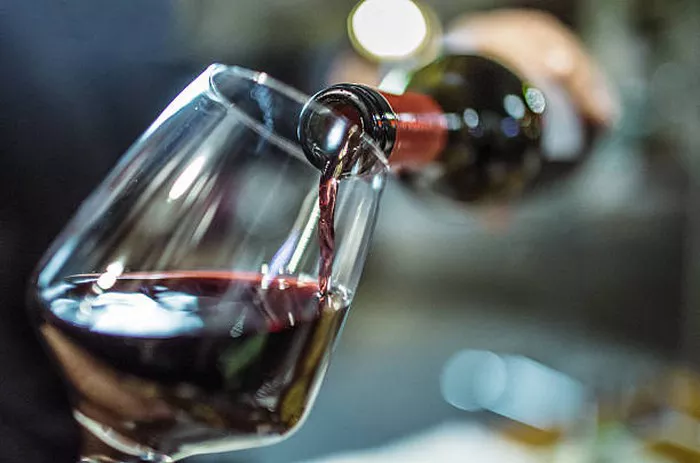Pinot Noir, often celebrated for its finesse and elegance, is a red wine varietal known for its delicate flavors and complex character. In this article, we’ll delve into the intricate process of crafting Pinot Noir wine, from the vineyard to the bottle, exploring the characteristics that make it a beloved choice among wine enthusiasts.
1. The Versatile Pinot Noir Grape
Origin: Pinot Noir grapes have a rich history and are believed to have originated in the Burgundy region of France. Today, they are cultivated in various wine regions worldwide.
Characteristics: Pinot Noir grapes are thin-skinned and particularly susceptible to their terroir, meaning they reflect the unique characteristics of the soil and climate in which they are grown. This sensitivity contributes to the diverse range of Pinot Noir wines produced.
2. Harvesting and Sorting
Timing: The timing of the Pinot Noir grape harvest is critical. Winemakers carefully monitor ripeness levels to determine the optimal moment for picking, ensuring a balance of acidity and fruit flavors.
Hand-Harvesting: In many high-quality Pinot Noir vineyards, grapes are hand-harvested to select only the best clusters. This meticulous process minimizes damage to the delicate grapes.
3. Crushing and Fermentation
Gentle Crushing: After harvesting, the grapes are gently crushed to release the juice while minimizing damage to the grape skins. Some winemakers choose to keep a portion of the grapes whole or as whole clusters to enhance flavor complexity.
Fermentation: The grape juice is fermented in open-top fermentation tanks or oak barrels. The choice of fermentation vessel and the use of native or cultured yeasts influence the wine’s flavor profile.
4. Aging and Oak Influence
Oak Aging: Many Pinot Noir wines benefit from aging in oak barrels, which can impart flavors of vanilla, spice, and toast. The duration and type of oak used vary, influencing the wine’s final character.
5. Blending and Bottling
Single-Varietal or Blend: Pinot Noir is often bottled as a single-varietal wine to showcase its unique qualities. However, some winemakers also use it in blends to complement other grape varieties.
Bottling: After aging and blending (if applicable), the wine is carefully bottled, often with minimal filtration to preserve its character.
6. Enjoying Pinot Noir
Serving Temperature: Pinot Noir is best served slightly below room temperature, around 55°F (13°C), to enhance its delicate aromas and flavors.
Food Pairings: Pinot Noir is a versatile wine that pairs well with a range of dishes, including roasted poultry, salmon, mushrooms, and charcuterie. Its bright acidity and red fruit notes make it a favorite for pairing with diverse cuisines.
In conclusion, crafting Pinot Noir wine is a labor of love that requires attention to detail, patience, and a deep understanding of the grape’s nuances. The result is a wine that captures the essence of its terroir and displays a wide range of flavors and aromas, making it a captivating choice for wine enthusiasts and a delightful companion to a variety of meals.
FAQs about making Pinot Noir wine:
Q1: Can Pinot Noir be grown in various wine regions around the world?
A1: Yes, Pinot Noir is a versatile grape variety that can be successfully grown in various wine regions globally. It is known for its adaptability to different climates and soil types, which contributes to the diverse range of Pinot Noir wines produced.
Q2: How does the choice of fermentation vessel impact the flavor of Pinot Noir wine?
A2: The choice of fermentation vessel, whether stainless steel tanks, open-top fermenters, or oak barrels, can influence the flavor profile of Pinot Noir wine. Stainless steel may preserve fruit purity, while oak fermentation can introduce complex aromas and flavors like vanilla and spice.
Q3: Are there specific pruning techniques for Pinot Noir vines to optimize grape quality?
A3: Yes, pruning techniques play a crucial role in managing vine growth and optimizing grape quality for Pinot Noir. Methods like cane pruning or spur pruning are employed to control yield, ensure even ripening, and maintain vine balance.
Q4: What is the significance of the “clone” in Pinot Noir cultivation?
A4: Pinot Noir has numerous clones, or genetic variants, each with subtle differences in traits like berry size, cluster density, and flavor characteristics. Growers may select specific clones based on their desired wine style and the conditions of their vineyard site.
Q5: Can Pinot Noir be used in blends, or is it primarily bottled as a single-varietal wine?
A5: While Pinot Noir is often bottled as a single-varietal wine to showcase its unique qualities, it can also be used in blends, especially in regions like Burgundy. It may be blended with other grape varieties to create more complex and layered wines.
Q6: How does oak aging impact the flavor profile of Pinot Noir wine?
A6: Oak aging can impart various flavors and aromas to Pinot Noir wine, including vanilla, spice, and toast. The type of oak, duration of aging, and the toast level of the barrels all contribute to the final character of the wine.
Q7: Are there specific considerations for fermenting Pinot Noir grapes using native yeasts?
A7: Using native or wild yeasts for fermentation can introduce unique flavors and aromas to Pinot Noir wine. However, it requires careful monitoring of fermentation temperatures and conditions to ensure a successful fermentation process.
Q8: Can Pinot Noir wine benefit from bottle aging, or is it best enjoyed relatively young?
A8: Pinot Noir wines can benefit from bottle aging, especially those from high-quality vineyards and exceptional vintages. Proper aging can enhance complexity and depth, allowing the wine to develop more nuanced flavors and aromas over time.


